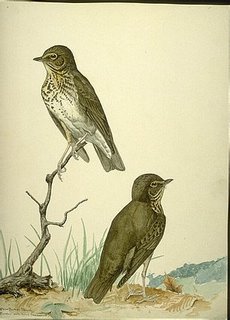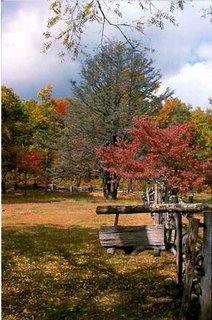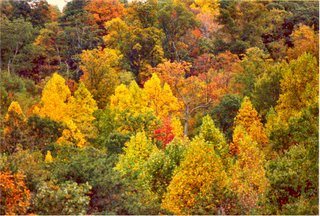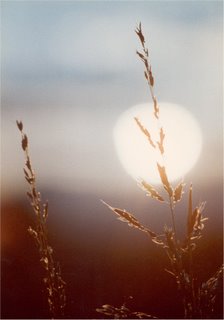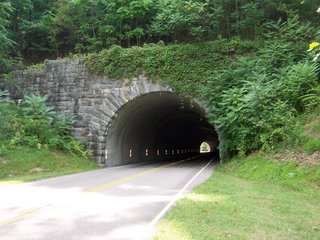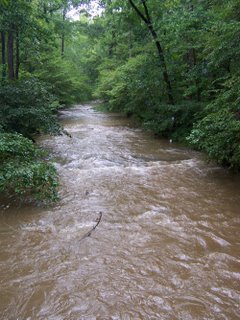Review: Birds of Shenandoah National Park, Blue Ridge Parkway, and Great Smoky Mountains National Park: A Field Guide
 Birders today have a wealth of bird guides and other identification material to use on their trips into the field and for home study. Even as North American guides have continued to expand their coverage and have become more sophisticated, there has continued to be interest in guides with a narrower, more regional focus. A newly-published field guide profiles the bird species of a region close to me: Birds of Shenandoah National Park, Blue Ridge Parkway, and Great Smoky Mountains National Park. The book was written and organized by Ernest Preston Edwards.
Birders today have a wealth of bird guides and other identification material to use on their trips into the field and for home study. Even as North American guides have continued to expand their coverage and have become more sophisticated, there has continued to be interest in guides with a narrower, more regional focus. A newly-published field guide profiles the bird species of a region close to me: Birds of Shenandoah National Park, Blue Ridge Parkway, and Great Smoky Mountains National Park. The book was written and organized by Ernest Preston Edwards.As Edwards explains in his introduction, the Blue Ridge is an interesting area ecologically due to its rapid changes in elevation. Variations in the landscape encourage avian diversity. While southern bird species inhabit the lower elevations, a few miles away one may find some northern species at the tops of the ridges. Several species can be found breeding in the Mid-Atlantic at such higher elevations. There have been 336 species recorded in the area covered by this book.
Aside from a brief introduction that includes maps of the book's coverage and a diagram of bird topography, the bulk of the book consists of species accounts and plates. The descriptions and plates accompany each other on facing pages. Species accounts include the English and scientific names, a brief description of characteristic plumages, and notes on habitat and locations to find the species. Specific locations are rarely given; the note simply states whether to look along Skyline Drive, the Blue Ridge Parkway, or the Great Smoky Mountains National Park. Rare species and vagrants are placed at the very end of the book, for reference and to signal that these are relatively unlikely. There are no range maps. In a continental guide, the lack of maps would be a major drawback, but in a small regional guide, they are probably unnecessary.
The illustrations are mostly reprinted from a work by the same principal author and illustrator: A Field Guide to the Birds of Mexico and Adjacent Areas. A small number were contributed by Ramiel Papish and F.P. Bennett. The authors chose to use painted illustrations rather than photographs. While photographic guides have been improving lately, especially with the publication of highly-detailed guides to specific familes, illustrations are still largely the best choice for general field guides that cover all species in a given area. The illustrations are competently done and show the salient markings. Male and female forms are shown for sexually dimorphic species, and immature forms are shown for species where there is a major difference from adult plumages. While most illustrations are in color, some - particularly among the loons, grebes, some raptors, gulls, and terns - appear in black-and-white. For these species shape and pattern are generally more important than color.
This guide's illustrations do not quite measure up artistically to those in the Sibley guides, which have set the standard for illustrated field guides. The colors in the illustrations tend to be duller than Sibley's. They are more in line with those in the National Geographic guide. Some birds also seem slightly misshapen. This is especially noticeable among the thrushes. Other family groups, such as the woodpeckers, are much better.
With all of the field guides to North American birds that already exist, one might reasonably ask if another one is really necessary. Someone who does a lot of travelling or demands a high level of detail for the tricky species and subspecies may be better off looking elsewhere. However, this guide will be of use to at least three groups of birders. Beginning and some intermediate birders who watch birds primarily in the southern Appalachians will find this guide useful because it narrows identifications down to the most likely species. One of the challenges of starting out birding is making such distinctions between common and rare birds. Since the guide is very small and lightweight, it can easily be carried into the field. For that reason, it may be good for backpackers who need to reduce weight as much as possible. While the guide is marketed for birders in the Appalachian Mountains of Virginia, North Carolina, Tennessee, and West Virginia, birders in the Mid-Atlantic region outside of the Appalachians may use this book profitably. Most species found in the Blue Ridge are present in other areas at one time or another during the year, and vice-versa. Unless you do a lot of birding along the shore, the regional focus should not be an obstacle.
Full citation:
Ernest Preston Edwards, Birds of Shenandoah National Park, Blue Ridge Parkway, and Great Smoky Mountains National Park: A Field Guide. Illustrations by Edward Murrell Butler, Ramiel Papish, and F.P. Bennett. Blacksburg, Virginia: McDonald and Woodward Publishing Company, 2006. Pp. x, 142; maps, illustrations, checklist, and index. $19.95 paper. ISBN: 0939923963.
To purchase:
Amazon
Crossposted at A DC Birding Blog.




